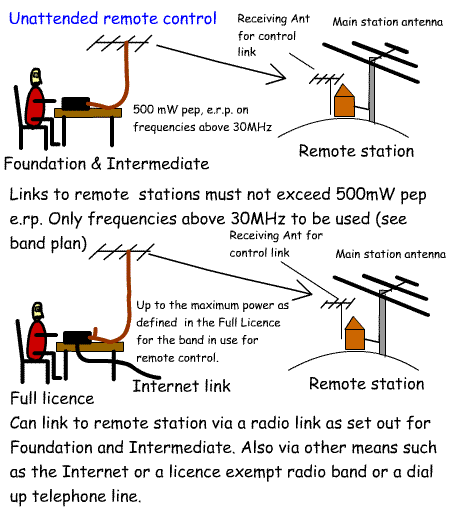
| ADVANCED LESSON 8 |  |
| LEARNING OBJECTIVES and NOTES | |
| 2g Unattended operation The terms of the Licence do allow unattended operation of radio equipment (including beacons) subject to certain rules. “Unattended Operation” means the operation of Radio Equipment by the Licensee when the Licensee is in a different location to that where the Radio Equipment is located; |
|
| 2g.1 10(1) 17(1)(ll) Unattended use The Licensee may conduct Unattended Operation of Radio Equipment provided that any such operation is consistent with the terms of this Licence. Additional restrictions which apply to the Unattended Operation of Beacons are specified in Schedule 2 to this Licence. |
|
|
10(2) 17(1)(ff) Unattended remote control The Licence also allows remote control of radio equipment. For example you may have a station set up in the countryside with a good antenna system. Subject to certain rules this could be operated by you from another location, for example a flat in the middle of a city over the Internet. Remote access is for your own use. You cannot provide general, unsupervised access to all Amateurs. The communication link to the remote station must be secure to prevent other Amateurs and the general public using it. Security measures should take into account section 11(2). That is to say the messages transmitted by the remote equipment should not be encrypted to make them unintelligible. The link to remote equipment must be failsafe to prevent unintended transmissions or transmission of a type not permitted by the Licence. For example if the link fails, the transmitter must not be left in permanent transmit. |

|
| 10(3) Remotely controlled equipment is not for general use. Clause 10 does not permit the
Licensee to install Radio Equipment capable of Remote Control Operation
for general unsupervised use by other Amateurs. As mentioned above remote operation is for personal use and should not be open for use by amateurs in general. |
|
| 10(4) 10(5) 10(6) 10(7) 11(2) Remote control links Key points about bands used for remote control of equipment:
|
 |